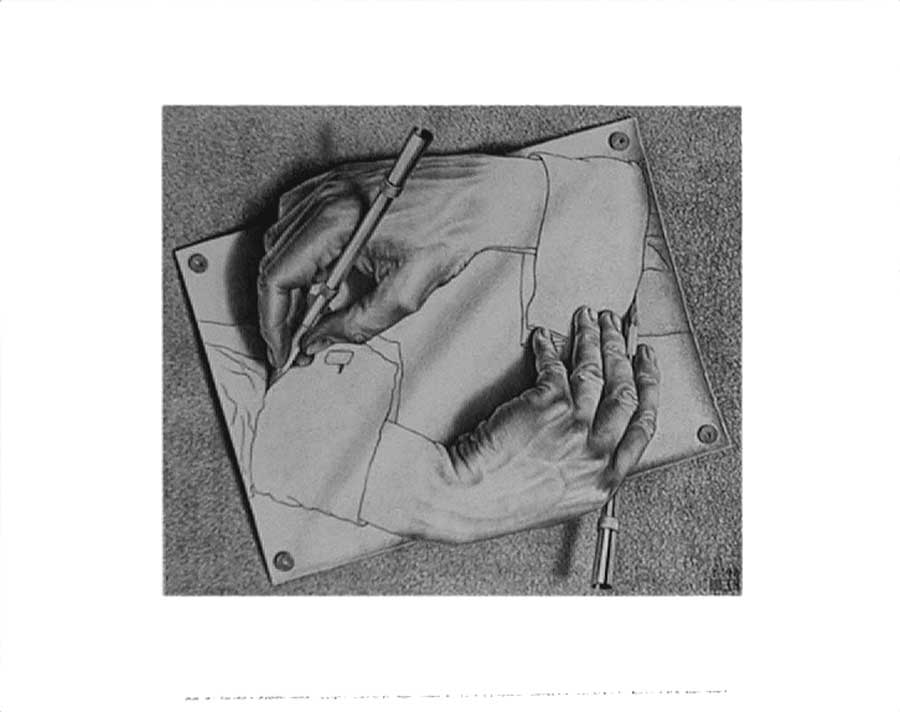
[14th of July 2003.] © University of Southampton 2003
Wendy's Office
David Lowe* University of Technology, Sydney, {david.lowe@uts.edu.au} http://www.eng.uts.edu.au/~dbl/
Leslie Carr (WICK PI)
Gary Wills (minutes)
David explained that from his prospective the introduction of a web-base system in to an organisation has far reaching effects on the nature of the business, organisation and workflow other than simply changing the procedures for the domain in which the web system sits. For example take a system that allows customers to order goods on line. This system will not only change your interface procedures with the customer, but also your ordering and accounting procedures.
On the surface this may look like the introduction of just another piece of IT in an organisation, for which there is a standard design methodology (Figure 1)

Figure 1. Tradition IT Design
However, there are fundamental differences when introducing a web-based system.
The first is subtle, but very important, the customer is no longer kept at a distance as in a conventional system (in front of a shop counter), but are now integrated into your processes (they are now behind the shop counter, with the shop keeper). This makes the design more complicated.
The second is that two different solutions will produce different set of changes this is due to the nature of Web design (Figure 2). The impact of the introduction of a web-based information system is often more significant, large scale and its impact is often more apparent much earlier in the design. Anecdotal evidence suggests that the design solution may also be effected by the type of analysis undertaken and the prototype methods used.

Figure 2. Web Design in Practice.
This leads to the question of how would you go about designing a web site. There are a number of conventional tools for capturing the function aspects of a system, UML being a popular approach. However, when designing a Web-based system you need to not only capture the information, but the relationships between the underlying content, the users perceived views of the content and the interaction of these views [1].
Hypermedia Design approaches effectively model the information structure, the way web pages are composed and there relationships, WebML is a good example of such a system. However, hypermedia design methods fail to address how to model higher levels of abstraction, namely the business model/processes and how one can move from the higher levels of abstraction. David's idea is that you can capture the informational elements of a system using an information flow diagrams, similar to the way you can capture business process in a sequence diagram [2].
The business process is capture using a standard Business process model for capturing value exchanges, called e3-value model. While the lower level information structure is represented by WebML. To map between the business model and the WebML, they have extended WebML to include a standard notation to model the information flow ( both internal and external) [3], this has been called WebML + (Figure 3).

Figure 3. Typical levels in modelling of web system [3]
The WICK position is explain in a technical report [4].
(I only have sparse notes here so hopefully you can both add to these)
After David had explain his current thinking we looked are where there are similarities between models.

Figure 4 WICK as the Glue between the levels?
David Lowe and Rachatrin Tongrungrojana (2003) WebML+ for Communication of Information Flows : An Empirical Study. Third International Conference on Web Engineering Oviedo, Asturias, Spain. July 14 -18, 2003 (http://icwe2003.uniovi.es/home.htm )
Rachatrin Tongrungrojana, David Lowe (2003) WebML+ : a Web modeling language for forming a bridge between business modeling and information modeling SEKE’2003 – 15th International Conference on Software Engineering and Knowledge Engineering , San Francisco Bay, July 1-3, 2003
Rachatrin Tongrungrojana, David Lowe (2003) WebML+ : a Web modeling language for modeling architectural-level information flows. Submitted to International Journal of Web Engineering and Technology (IJWET)
Woukeu A, Carr L, Wills G, Hall W. (2003) Rethinking Web Design Models: Requirements for Addressing the Content. IAM Technical Report No: ECSTR-IAM03 -002, ISBN: 0854327940
© University of Southampton 2003
